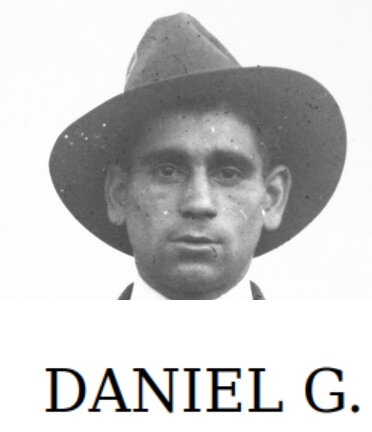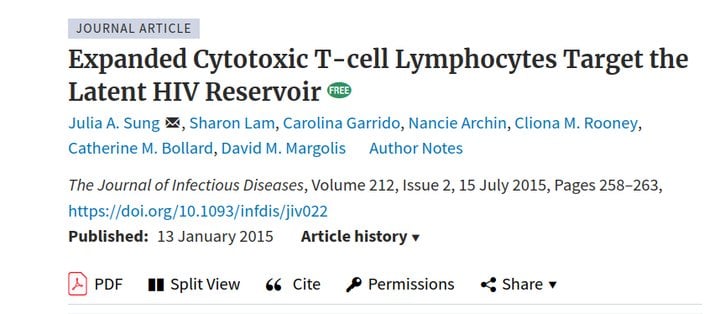Dentist Winky?

The latent human immunodeficiency virus (HIV) reservoir remains a major obstacle to eradication of persistent infection [1]. Therapies that clear latent HIV infection may require both a means to reactivate virus protein expression, and an immune response that recognizes and kills infected cells as they leave the latent state [2]. The extant antiviral immune response may be inadequate to clear such latently infected cells [3].
Augmented, polyclonal, functional antiviral responses have been created by ex vivo expansion of virus-specific T cells. These cells have successfully treated viral infections after hematopoietic stem cell transplantation and Epstein-Barr virus–associated malignancies [4, 5]. The use of ex vivo expanded T cells from HIV-infected individuals in place of potent antiretroviral therapy (ART) was first tested over a decade ago (reviewed in [6]). These studies established the safety of adoptive transfer of HIV-specific T cells, but cellular therapy by itself had only transient antiviral efficacy, due in part to the reliance on monoclonal T cells, extensive in vitro expansion, and their use in actively viremic patients. In a more recent study, HIV-specific CD8+ T cells derived from ART-suppressed patients were found to be persistent in the blood and capable of homing to rectal tissue following reinfusion, but virologic outcomes were not assessed [7].
In this study, we examine the ability of functional, broadly specific cytotoxic T cells (HXTCs) derived from 6 HIV+ individuals, clinically diverse but aviremic on durable ART, to target the latent reservoir ex vivo. We find that ex vivo expanded, polyclonal T cells broadly specific for multiple HIV epitopes [8] in Gag, Pol, and Nef (HXTCs) can be produced in clinically relevant numbers. These studies set the stage for testing of HXTCs in ART-suppressed patients. This combination approach may allow clearance of residual low-level viremia and if coadministered with latency reversing agents, might clear the latent reservoir itself
Augmented, polyclonal, functional antiviral responses have been created by ex vivo expansion of virus-specific T cells. These cells have successfully treated viral infections after hematopoietic stem cell transplantation and Epstein-Barr virus–associated malignancies [4, 5]. The use of ex vivo expanded T cells from HIV-infected individuals in place of potent antiretroviral therapy (ART) was first tested over a decade ago (reviewed in [6]). These studies established the safety of adoptive transfer of HIV-specific T cells, but cellular therapy by itself had only transient antiviral efficacy, due in part to the reliance on monoclonal T cells, extensive in vitro expansion, and their use in actively viremic patients. In a more recent study, HIV-specific CD8+ T cells derived from ART-suppressed patients were found to be persistent in the blood and capable of homing to rectal tissue following reinfusion, but virologic outcomes were not assessed [7].
In this study, we examine the ability of functional, broadly specific cytotoxic T cells (HXTCs) derived from 6 HIV+ individuals, clinically diverse but aviremic on durable ART, to target the latent reservoir ex vivo. We find that ex vivo expanded, polyclonal T cells broadly specific for multiple HIV epitopes [8] in Gag, Pol, and Nef (HXTCs) can be produced in clinically relevant numbers. These studies set the stage for testing of HXTCs in ART-suppressed patients. This combination approach may allow clearance of residual low-level viremia and if coadministered with latency reversing agents, might clear the latent reservoir itself

...



































